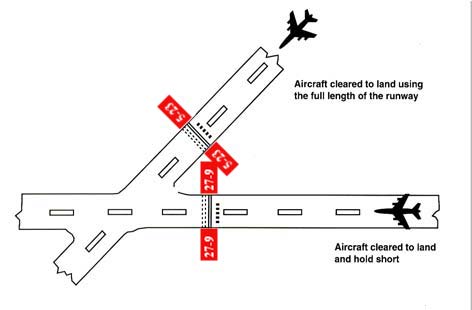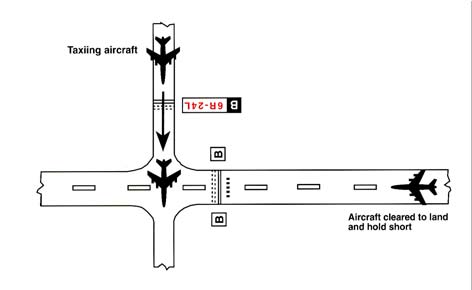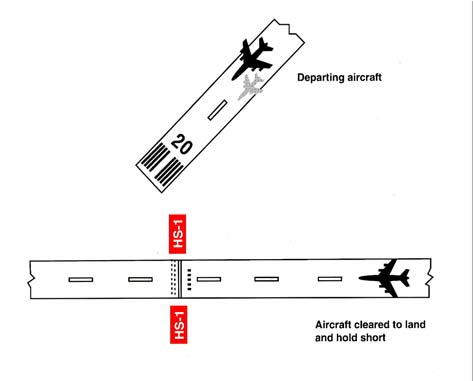Index
214
-- Page 215 --
216
11/10/16
12/10/15 AIM
process should include an assessment of which FIG 4-3-9
LAHSO combinations would work for them given Land and Hold Short of a Designated Point
their aircraft's required landing distance. Good pilot on a Runway Other Than an Intersecting
decision making is knowing in advance whether one Runway or Taxiway
can accept a LAHSO clearance if offered.
FIG 4-3-7
Land and Hold Short of an Intersecting Runway
EXAMPLE-
FIG 4-3-9 - holding short at a designated point may be
required to avoid conflicts with the runway safety 5. If, for any reason, such as difficulty in
area/flight path of a nearby runway. discerning the location of a LAHSO intersection,
NOTE- wind conditions, aircraft condition, etc., the pilot
Each figure shows the approximate location of LAHSO elects to request to land on the full length of the
markings, signage, and in-pavement lighting when runway, to land on another runway, or to decline
installed. LAHSO, a pilot is expected to promptly inform air
REFERENCE-
AIM, Chapter 2, Aeronautical Lighting and Other Airport Visual Aids.
traffic, ideally even before the clearance is issued. A
LAHSO clearance, once accepted, must be
FIG 4-3-8
adhered to, just as any other ATC clearance,
Land and Hold Short of an Intersecting Taxiway
unless an amended clearance is obtained or an
emergency occurs. A LAHSO clearance does not
preclude a rejected landing.
6. A pilot who accepts a LAHSO clearance
should land and exit the runway at the first convenient
taxiway (unless directed otherwise) before reaching
the hold short point. Otherwise, the pilot must stop
and hold at the hold short point. If a rejected landing
becomes necessary after accepting a LAHSO
clearance, the pilot should maintain safe separa-
tion from other aircraft or vehicles, and should
promptly notify the controller.
Airport Operations 4-3-15


